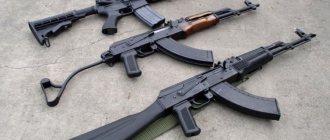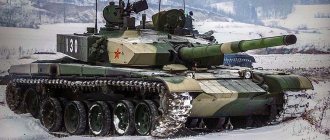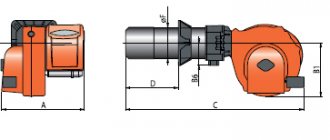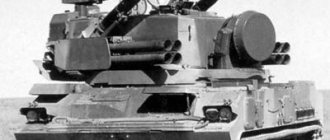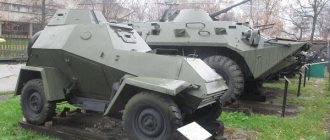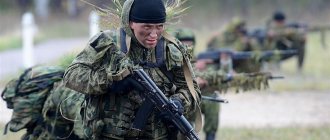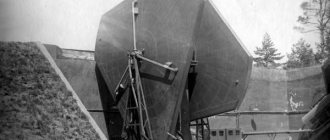Modifications of the Tour 98 tank
- "Ture 98" (WZ-123. ZTZ-98) - prototype released in 1992. The commander has an old type observation device installed.
- "Type 98A" (1998) - serial modification of the "Ture 98" tank.
- "Ture 98B" is an unrealized project of the "Ture 98" tank with a 120 mm cannon.
- "Type 98G" (2000) - a variant of the Tour 98 tank with reinforced armor. The armor protection of the tank's frontal projection has been enhanced by installing built-in dynamic protection units on the hull and turret. In addition, the sides of the tower are additionally protected, where the hinged dynamic protection is mounted on top of the lattice basket. The tank's combat weight increased to 52 tons. Served as the basis for the creation of the Type 98G tank.
Type 88 (automatic) | WikiWarriors
Type 88
Type:
Automatic/assault rifle
Time:
1980s - present tense
Weight (without cartridges, kg):
3.1 kg
Length (mm):
880 mm
Caliber:
5.45 x 39 mm
USM:
Trigger type; fire mode - single/automatic
Rate of fire (per minute):
650 rounds per minute
Initial bullet speed (m/s):
900 m/s
Sighting range (m):
1000 meters
Magazine capacity:
30 rounds
Origin:
DPRK
Application area:
Asia, Africa
Users:
The Type 98 is a North Korean copy of the AK-74, also known as the Type 88.
For a long time, due to the fact that the leaders of the WPK (Workers' Party of Korea) were stubborn people and did not have the spirit of bargaining characteristic of the Romanian or Chinese leadership, North Korean weapons were very rare in the world. However, recently, due to a catastrophic shortage of freely convertible currency, the DPRK has begun to quite actively sell off stocks of 7.62x39 mm assault rifles.
“Type 88” (other sources have the designation “Type 98”) is a copy of the AK-74, but there are minor changes in the design: a different shape of the butt, variant Type 88A (analogous to the AKS-74), similar to the GDR MPi-74, metal magazines , identical in design to stamped magazines of an AK assault rifle.
Some of the machine guns have a wooden frame, and some of the weapons have plastic fittings, like the AK-74M. That is, most likely, imported from Russia. On the early versions, the fore-end was wooden, the butt was plastic. On modern versions, both the forend and butt are plastic.
Operating countriesEdit
- DPRK
- Rwanda
- Zambia
en.warriors.wikia.com
Options and modifications[edit]
- Type 56
- basic variant with a fixed wooden stock.
Type 56-1
- variant with a folding metal stock (copy of the AKS). - The Type 56-2
is an improved export version of the Type 56-1, differing from the latter in the absence of a bayonet and a folding stock similar to that of the Type 81. - Type 56C (QBZ56C)
is a variant of Type 56-2 with a 280 mm barrel, intended for arming the Chinese Navy, as well as special units. - Type 56S (Sporter)
- a self-loading version for the civilian market chambered for 7.62x39 mm. - Type 84S (Sporter)
- a self-loading version for the civilian market chambered for the 5.56x45 mm NATO cartridge.
- an unlicensed Iranian copy of the Type 56.
- KLS
is a variant with a fixed stock.
- a variant with a butt folding downwards and forwards.
is a variant with a side-folding stock.
Composition of project documentation according to the City Code and Resolution 87
The list of sections included in the design documentation for capital construction projects for industrial and non-industrial purposes is given in Part 12 of Article 48 of the Town Planning Code and paragraphs 10 - 32 of Resolution No. 87 of 02/16/2008:
Section 1 “Explanatory Note” with initial data for architectural and construction design, construction, reconstruction, major repairs of capital construction projects, including the results of engineering surveys, technical conditions. (Composition of the PZ according to post. No. 87)
Section 2 “Scheme of planning organization of the land plot”, which is made in accordance with the information specified in the urban planning plan of the land plot. (Composition of ROM (ROM) according to post 87)
Section 3 “Architectural solutions.” (Composition of AR according to post. 87)
Section 4 “Constructive and space-planning solutions.” (Composition of the Kyrgyz Republic according to post. 87)
Section 5 “Information about engineering equipment, engineering support networks, list of engineering activities, content of technological solutions.”
a) subsection “Power supply system”; (Composition of the ES according to post. 87)
b) subsection “Water supply system”; (Composition of the section according to post. 87)
c) subsection “Water disposal system”; (Composition of the section according to post. 87)
d) subsection “Heating, ventilation and air conditioning, heating networks”; (Composition of chemical agent according to post. 87)
e) subsection “Communication networks”; (Composition of the section according to post. 87)
f) subsection “Gas supply system”; (Composition of the GSN and FGP according to post. 87)
g) subsection “Technological solutions”; (Composition of the section according to post. 87)
Section 6 “Construction Organization Project”; (Composition of the PIC according to post. 87)
Section 6.1 “Road Traffic Management Project” in cases provided for by the Federal Law “On the organization of road traffic in the Russian Federation and on amendments to certain legislative acts of the Russian Federation”;
Section 7 “Project for organizing work on demolition or dismantling of capital construction projects” is carried out when it is necessary to demolish (dismantle) an object or part of a capital construction object. (Composition of the section according to post. 87)
Section 8 “List of environmental protection measures.” (Composition of JFO according to post.87)
Section 9 “Measures to ensure fire safety”. (Composition of the PB according to post. 87)
Section 10 “Measures to ensure access for people with disabilities” to healthcare, education, culture, recreation, sports and other social, cultural, public utility facilities, transport, trade, public catering facilities, business, administrative, financial, religious facilities, housing facilities (in the case of preparation of design documentation for construction, reconstruction, major repairs of such facilities). (Composition of ODIs according to regulation 87)
Section 10.1 “Requirements for ensuring the safe operation of capital construction projects”
Section 11 “Estimate for the construction of capital construction projects.” (Composition of the Council of Ministers according to post. 87)
Estimates for construction, reconstruction, major repairs, demolition of capital construction projects, work to preserve cultural heritage sites, financed with funds from the budgets of the budget system of the Russian Federation, funds from legal entities created by the Russian Federation, constituent entities of the Russian Federation, municipalities, legal entities, for the statutory (share) capital of which the Russian Federation, constituent entities of the Russian Federation, municipalities amounts to more than 50%.
Must contain a text part as part of an explanatory note to the estimate documentation and estimate documentation. It must contain a summary of costs, a summary estimate of the cost of construction, site and local estimates (estimates), estimates for individual types of costs.
Section 11.1 “Measures to ensure compliance with energy efficiency requirements and requirements for equipping buildings, structures and structures with metering devices for energy resources used.” (Composition of EE according to post. 87)
Section 11.2 “Information on the standard frequency of work on major repairs of an apartment building, necessary to ensure the safe operation of such a house, on the volume and composition of the specified work” (in the case of preparing design documentation for the construction or reconstruction of an apartment building).
Section 12 “Other documentation in cases provided for by federal laws.” The section must contain documentation, the need for development of which during the design and construction of a capital construction project is provided for by the legislative acts of the Russian Federation, including:
a) declaration of industrial safety of hazardous production facilities, developed at the design stage;
b) declaration of safety of hydraulic structures, developed at the design stage;
b.1) list of measures for civil defense, measures to prevent emergencies of a natural and man-made nature, measures to counter terrorism for nuclear energy facilities (including nuclear installations, storage facilities for nuclear materials and radioactive substances), hazardous production facilities, determined such in accordance with the legislation of the Russian Federation, especially dangerous, technically complex, unique objects, defense and security objects (part 14 of article 48 of the Town Planning Code of the Russian Federation);
c) other documentation established by legislative acts of the Russian Federation.
According to Part 12.1 of Article 48 of the Town Planning Code of the Russian Federation, the preparation of project documentation at the initiative of the developer or customer can be carried out in relation to individual stages of construction and reconstruction of capital construction projects.
In culture[edit]
- The assault rifle is a standard assault rifle for the PLA Medic and Assault class in Battlefield 2.
- An improved version of the Type-56 was used by the PLA before the Great War, in the Fallout series of games. In part 3, the machine is called the Chinese machine gun.
- The machine gun is in the game “7.62”, and it is equipped with a bayonet that cannot be removed, unlike other machine guns of the AK family.
- In Grand Theft Auto: San Andreas called AK-47, as well as in Grand Theft Auto V there is an assault rifle, which is already called type 56.
Description
The Type 89 automatic is based on the removal of powder gases from the barrel; locking is carried out by turning the bolt through 7 lugs. The gas piston consists of two parts: a head located in front and having a smaller diameter relative to the gas cylinder, and a more massive piston body located approximately in the middle of the cylinder. Thanks to this, the transfer of energy from the powder gases to the piston occurs in two stages, which contributes to smoother operation of the mechanisms and reduced wear. The machine gun is equipped with a slide stop, the corresponding button is located on the left.
The trigger allows firing in single and continuous bursts; optionally, it is possible to install a trigger with an additional firing mode in fixed bursts of 3 rounds. The safety switch is located above the pistol grip on the right.
The handguard is made of aluminum, on top of which there are plastic linings. The machine gun is equipped with a folding bipod. A bayonet can also be attached, and rifle grenades can be thrown from the barrel. The 20- and 30-round magazines used are identical in design to STANAG magazines, but have holes on the left to control ammunition consumption.
Operating countries[edit]
Type 56-1, Type 84S and Type 56.
- Afghanistan
- Albania
- Armenia
- Bangladesh
- Benin
- Bolivia
- Bosnia and Herzegovina
- Cambodia
- CAR
- Chad
- China
- Croatia
- Djibouti
- East Timor
- Estonia
- Ethiopia
- Finland
- Gabon
- Guyana
- India
- Indonesia
- Iran
- Iraq
- Iraqi Kurdistan
- Ivory Coast
- Kenya
- Kosovo
- Laos
- Libya
- Madagascar
- Mali
- Malta
- Mexico
- Morocco
- Myanmar
- Nicaragua
- Nigeria
- DPRK
- Pakistan
- Palestine
- Rwanda
- Sierra Leone
- Somalia
- South Sudan
- Sri Lanka
- Sudan
- Syria
- Tajikistan
- Thailand
- Uganda
- USA
- Vietnam
- Yemen
Sources[edit]
- https://ru.wikipedia.org/wiki/Type_56
Small arms of the PRC after 1949
| Pistols: | Type 51 • Type 52 • Type 54 • Type 59 • Type 64 • Type 64 silent • Type 67 silent • Type 77 • Type 77B • Type 80 • Type 84 • Norinco NP-32 • Norinco NP-34 • QSW-06 • QSZ -11 • QSZ-92 • QX-04 • CF07 • Norinco NP 75 • Norinco NP85B • Norinco NP 22 • Norinco M1911A1 |
| Submachine guns: | Type 36 • Type 64 • Type 79 • Type 82 • Type 85 • CF-08 • CF-05 • CS/LS06 • CS/LS5 • CS/LS3 • CS/LS2 • QCQ-05 • QCW-05 • JS 9 mm |
| Slot machines: | Type 56 carbine • Type 56 • Type 63 • Type 68 • Type 81 • Type 86s • CQ 5.56 • QBZ-03 • QBZ-95 • QBZ-97B • QBS-06 • NAR-10 • ZH-05 |
| Sniper rifles: | Type 79/85 • AMR-2 • FY-JS • JS 7.62 • M99 • M06 • QBU-09 • QBU-10 • QBU-88 • LR-2A |
| Shotguns: | Hawk • LW-3 • QBS 09 |
| Machine guns: | Type 53 manual • Type 53/57 • Type 56 • Type 58 • Type 67 • Type 74 • Type 80/86 • Type 81 • QJY-88 • QBB-95 • Hua Qing Minigun • CS/LM12 |
| Heavy machine guns: | Type 54 • Type 58 • Type 77 • Type 85 • QJZ-89 • QJG-02 • W85 • CS/LM5 |
| Hand grenade launchers: | Type 54 • Type 69 • Type 79 • Type 91 • QLG-10 • FHJ-84 • PF-89 |
| Automatic grenade launchers: | LG3 • LG6 • QLZ-04 • QLZ-87 • QLB-06/QLZ-87B |
| ATGMs and recoilless rifles: | Type 52 • Type 65 • Type 78 • PF-98 • HJ-8 • HJ-12 |
| MANPADS: | HN-5 • FN-6 • QW-1 • QW-3 • QW-19 |
| Flamethrowers: | Type 58 • Type 74 |
| Hand grenades: | Type 1 • Type 3 • Type 542 • Type 59 • Type 67 • Type 73 • Type 77-1 • Type 82-2 • WY-91 • JYS-1 • JYB-1 • JYD-1 • SC-2 |
Links
- Type 87 on the Japan Self-Defense Forces website
- 87式自走高射機関砲.(inaccessible link - history)
- 87式自走高射機関砲.
- 87式自走高射機関砲. Archived from the original on May 18, 2012.
| ;Japanese armored vehicles after 1945 | ||
| Main battle tanks | Type 61 Type 74 Type 90 Type 10 | |
| Self-propelled howitzers | "SV" Type 74 Type 75 Type 99 | |
| Anti-tank self-propelled guns | Type 60 | |
| ZSU | Type 87 | |
| MLRS | Type 75 | |
| Armored cars | Type 87 | |
| Armored personnel carriers | Type 60 Type 73 Type 82 Type 96 | |
| BMP | Type 89 | |
| Italics indicate experimental samples and those that did not go into mass production | ||
History of creation and production
In the early 1980s, the Japan Self-Defense Forces, in order to replace the old M42 Duster anti-aircraft self-propelled guns supplied to them by the United States, through the Japan Defense Agency, developed requirements for the creation of a domestic anti-aircraft self-propelled gun. The contract for the supply and production of the replacement M42 Duster was won by ]Mitsubishi Heavy Industries[/anchor]
.
The Type 87 SPAAG was developed by Mitsubishi Heavy Industries in 1987, which created the modernized chassis, and Japan Steel Works, which in turn produced the anti-aircraft gun. At the initial stage of production of the Type 87 SPAAG it was planned to use the chassis from the Type 61 tank, but later the chassis from the Type 74 tanks became the basis of the system
.
The bulk of the development and testing work was completed in 1982, and the first prototypes appeared already in 1983
.
